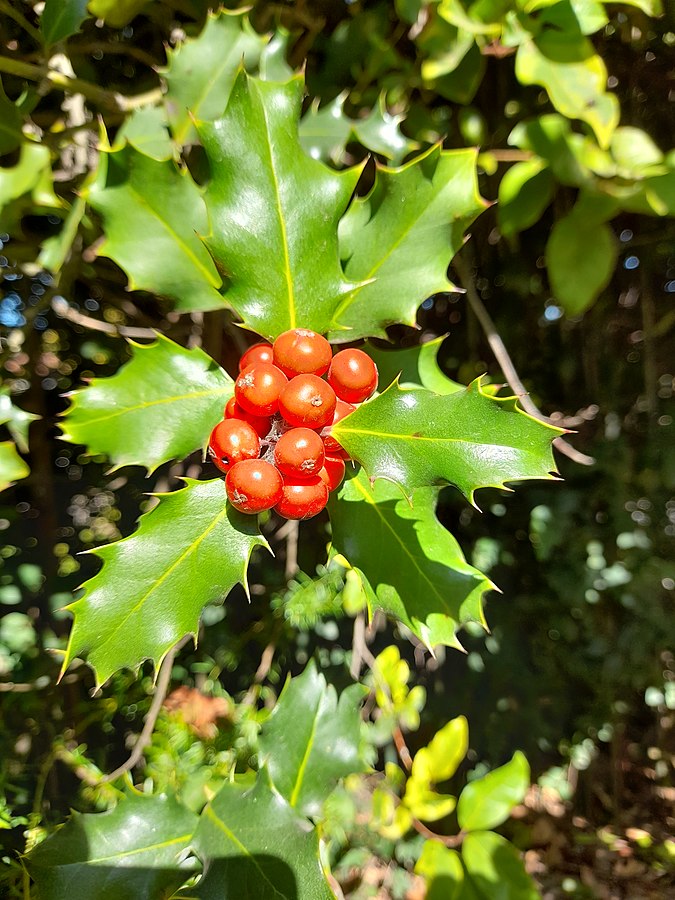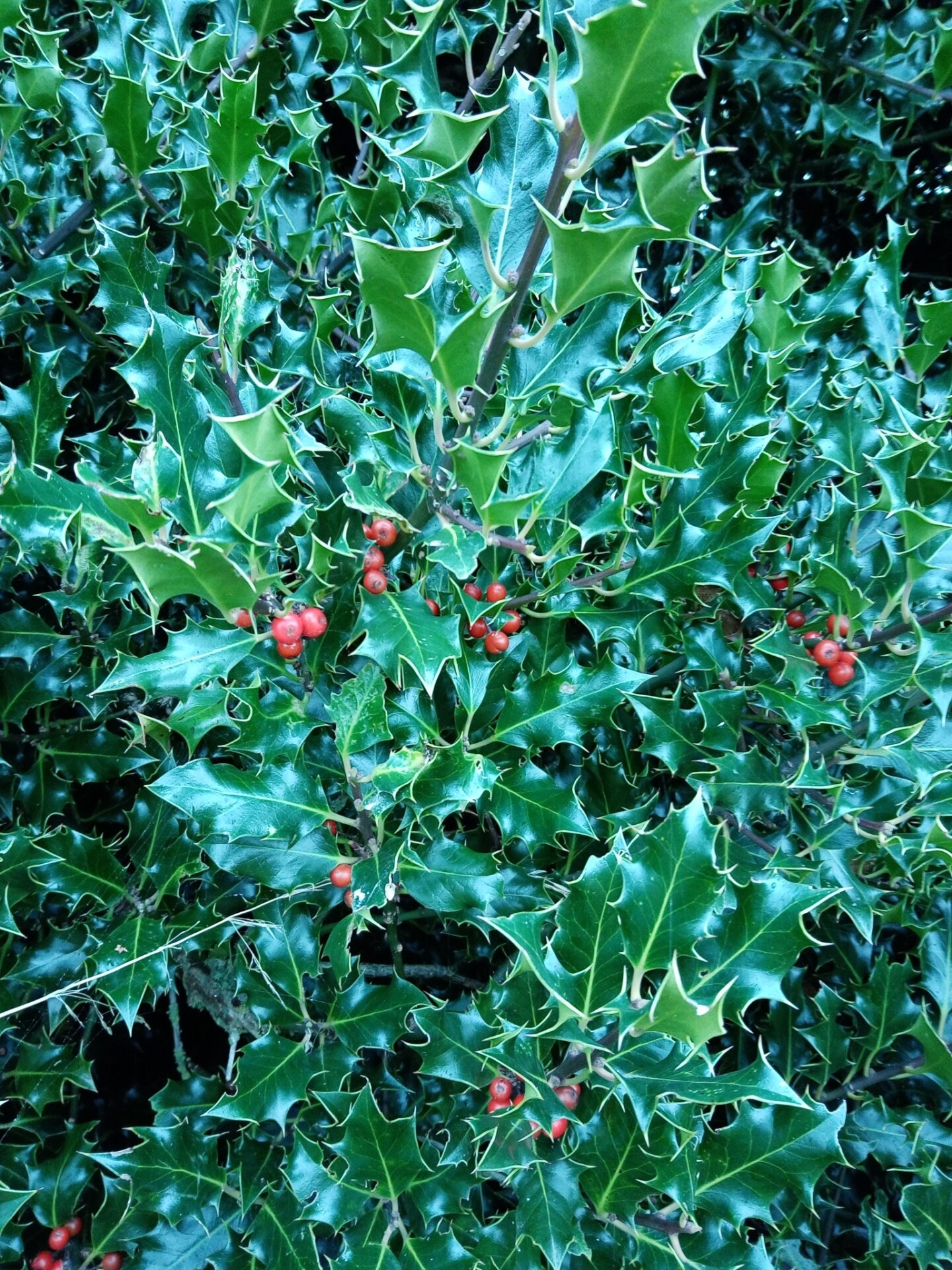Ilex aquifolium
Description
- An evergreen shrub native to Europe, commonly associated with festive decorations.
- Typically, plants are found between 1-3m tall but given the correct conditions can reach up to 10m in height. It is also able to grow as a creeping vine, as well as a standalone shrub.
- Flowers are small and white, giving way to bunches of reddish berries in winter.
- Leaves are thick, deep green and glossy in appearance. They are usually 3-10cm long with 3-5 sharp spines along each edge, pointing alternately upward and downward. Although leaves do become smoother on older branches that have not been browsed.

Introduction and spread
- Introduced intentionally as an ornamental plant with strong ties to European Christmas culture.
- Can grow from both seed (found in berries) and cuttings.
- Birds like to eat its berries (which are toxic to humans) and can then become serious vectors of spread.
Consequences of invasion
- Grows well in shade or sun and is extremely adaptable. Mature plants cast deep shade, depriving native plants of light.
- English holly is known to use a lot of water, preventing native plants from obtaining enough. It also competes with native plants for space, light and nutrients.
Status in the CKISS region
- English holly is currently classified as Insufficient Information in the CKISS region on the CKISS Annual Priority list. This means that there is insufficient information for English holly about its distribution, impacts, potential for spread and/or feasibility of control.
Integrated pest management options
Prevention
- Prevention is always the key first step in managing invasives. You can check out the CKISS EcoGarden project for fantastic native alternatives to grow in your garden.
Mechanical control
- Smaller, younger infestations can be dug up or simply pulled by hand.
- Larger tree plats can be removed using girdling – removing a strip of back from around the circumference of the tree near the base.
- Cutting near the base is effective, although plants can re-sprout so should be monitored.
Chemical control
- Surface or stump herbicide application in combination with mechanical cutting has proven to be effective, preventing resprouting.
Additional resources
Fraser Valley Invasive Species Society
Invasive Species Council of Metro Vancouver
Invasive Species Council of BC


